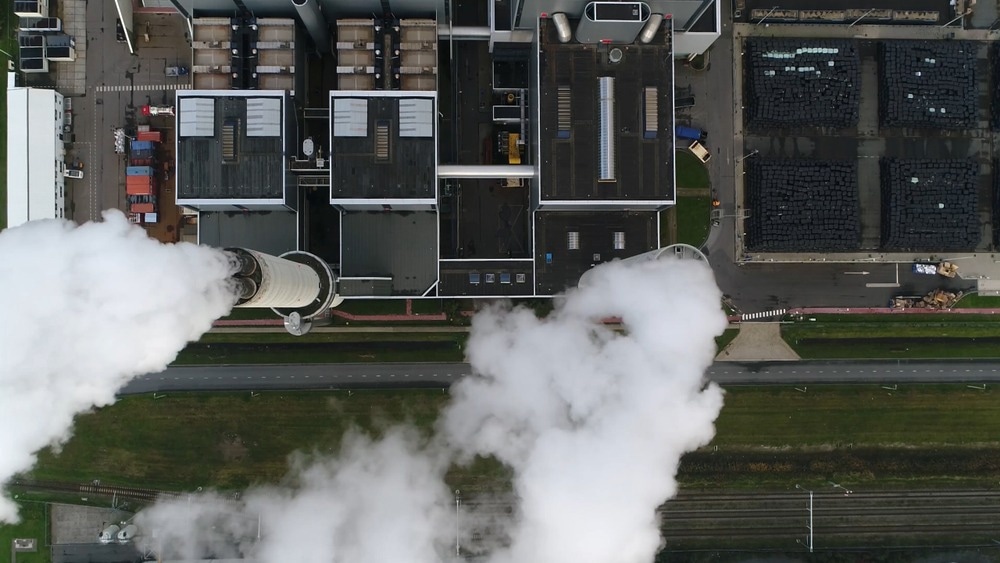
Image Credit: GLF Media/Shutterstock.com
The primary focus of current strategies to combat climate change is reducing carbon emissions from applications such as energy production and transportation. Carbon capture and storage examines how carbon dioxide (CO2) can be directly captured from the atmosphere or at the point of emission and stored safely within the natural environment.
What Does Net-Zero Mean?Net-zero means that all greenhouse gas emissions from a region, city, county, business or building are balanced by an equal reduction. This is not the same as carbon negative, which implies that more carbon is eliminated than is emitted, or zero-carbon, which indicates that no carbon or other greenhouse gases are generated. Net-zero refers to situations where greenhouse gas emissions are still occurring but are being balanced off by other actions.
Types of Carbon Capture TechnologyBiological carbon capture and storage naturally absorb CO2 from the atmosphere, such as in forests and oceans. Geological or artificial carbon capture and storage remove CO2 emissions from human-made activities and store them in sizable subterranean facilities.
Biological carbon capture happens on a far bigger scale than geological carbon capture. The technology to stimulate both has historically been seen as expensive and unpractical at scale. However, this is changing as research and investment into carbon collecting technology take off.
How Does Technology for Carbon Capture Operate?Carbon sinks are large areas where natural habitats, such as forests, oceans, grasslands, and wetlands, collect CO2 from the atmosphere as part of natural forms of carbon capture. Scientists and environmental and conservation professionals recognize the preservation and cultivation of carbon sinks as a way to improve the quantity of carbon removed from our atmosphere in the shortest amount of time.
Deep saline aquifers are saltwater-filled areas of permeable sedimentary rock subsurface geological formations. Saline aquifers offer the highest documented storage potential among all other types of artificial carbon capture. CO2 can be injected into these and stored forever.
Globally, carbon capture technologies are still being developed, with individual nations developing plans in response to their respective net-zero objectives. Businesses in China have created experimental commercial air filters that resemble enormous towers and significantly reduce air pollution.
These vast air towers filter air by pulling it into glass rooms heated with solar energy, creating a greenhouse effect. Before being released into the atmosphere as clean air, heated air is forced up the tower and filtered.
Ionic Liquids: The Next Big Thing in Carbon CaptureThe most recent carbon capture and storage technology developments involve new ionic liquids that are excellent at absorbing CO2.
The molecular structure of two-dimensional ‘ionic’ liquids enables greater rates of CO2 absorption.
Liquids used for editing are thought to be more ecologically friendly and provide more exact control in the chemical engineering processes.
Benefits of Carbon Capture and Storage TechnologyCarbon capture and storage generate more energy. Power production turbines can operate more effectively if CO2-based steam cycles, in which CO2 is pressured into a supercritical fluid are used. These cycles could facilitate heat transfer and require less energy to compress steam. It is also possible to produce sustainable geothermal energy by using geologically stored CO2 to harvest geothermal heat from the same regions into which it is introduced.
Carbon capture and storage produce additional gasoline. Technically, CO2 can be changed into fuel. There are other ways to do this, but they are challenging in terms of cost and effort.
Carbon capture also boosts production processes. Chemicals and plastics such as polyurethanes, which generate soft foams like those found in mattresses, can be produced using CO2.
Limitations in Carbon Capture Technology to Meet Net-Zero TargetsAccording to a survey by the Institute for Energy Economics and Financial Analysis, most carbon capture projects have underperformed or failed, and the ones that have succeeded included the purchase of fossil fuels.
The survey challenged the widely referenced United Nations climate change report that claimed carbon capture can achieve the net-zero target by 2050.
According to a study by Bruce Robertson, “many international agencies and national governments are relying on carbon capture in the fossil fuel industry to get to net zero, and that just won't work."
Current Projects of Carbon Capture TechnologyGlobally, there are almost 26 commercial-scale carbon capture projects running as of 2022, with another 21 projects in various stages of development and 13 others approaching front-end engineering design (FEED).
Coal gasification, fertilizer manufacturing, ethanol production, natural gas processing, coal-fired power generation, and refinery hydrogen production are industrial processes where large-scale carbon capture and storage have been established and are in use.
Conflicting Viewpoints Regarding Carbon Capture Technology for Achieving Net-Zero TargetsA developing carbon capture technique removes CO2 from exhaust streams from power plants or gas processing facilities. The CO2 byproduct is trapped and either permanently buried for storage or utilized for other industrial uses.
Some technologically successful carbon capture initiatives are not net-zero despite having a high nominal CO2 capture rate. This rate does not consider the CO2 released to fuel the carbon capture equipment. This explains why the industry has been utilizing carbon capture technology for decades, not necessarily as a climate-friendly solution, but rather as an inevitable byproduct of the production of fossil-fuel natural gas.
However, proponents of carbon capture claim that current legislation encourages investment in environmentally favorable projects. Credit is given for CO2 absorbed and stored. Many analysts believe carbon capture is the only method for reducing global warming emissions in "hard-to-abate" industries such as steel or cement production. Carbon capture should be seen as a temporary solution and given careful examination to achieve net-zero targets.